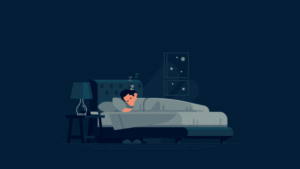Chances are good that you’ve experienced back pain at some point in your life, along with an estimated 80% of all adults. About one-quarter of Americans report back pain episodes in the last three months. Fortunately, not all back pain is chronic or debilitating. With rest and moderate care, the symptoms pass, and life returns to normal.
However, not all back pain sufferers are that lucky. Chronic back pain persists for three months or more, and it develops in as many as 20% of those with acute pain. There are many reasons why back pain starts and persists, from strains, sprains, and soft tissue injury, to nerve pressure caused by disk or vertebrae degeneration. In some cases, a specific cause can’t be pinpointed, and attempts at treatment may be unsuccessful.
When pain persists despite efforts to fix the cause, your quality of life depends on controlling the pain symptoms. Drug therapy works well over short durations, but for chronic pain, it’s less effective, as the risks of side effects and addiction grow. Radiofrequency ablation (RFA) presents a safe and long-term treatment that blocks the symptoms of back pain.
How RFA works
When pain originates from a nerve and attempts to relieve the cause of the pain fail, disabling the nerve itself may be an option. This is the thinking behind the RFA procedure. Using radiofrequency energy to heat the specific nerve creating the pain, a lesion forms that disrupt the pain signals originating from the nerve.
Successful more than 70% of the time, RFA procedures typically provide pain relief lasting from six months to one year, and in some cases, relief may extend for much longer.
The RFA procedure
Once we’ve agreed that RFA is the best way to treat your pain, you’ll be scheduled for a 60 to 90-minute procedure. You’ll need to arrange a ride home after the procedure and you may be out of action for a day or two, but the procedure is safe, with fast recovery times and low risk of complications.
Generally, RFA starts with an intravenous drip to aid sedation, as well as local anesthetics used at the point of treatment. RFA is guided by fluoroscopy, an active X-ray imaging technique to assure accurate placement of the RFA probe.
Typically, you’re awake during the procedure, since I’ll send tiny electrical signals to confirm the correct location of the probe. I’ll ask you if you sense these signals, usually through a tingling sensation.
Additional numbing is added when the nerve in question is pinpointed. Then the RFA energy starts, warming the nerve and disrupting the pain signals originating from that nerve. Your body’s healing system creates a lesion at this point, necessary for longer term pain masking. If other nerves require RFA treatment, these can be done in a single session.
After the RFA procedure
There are few complications associated with RFA treatments and these rarely occur. If you experience any effects from the procedure, it’s most likely to be minor pain or discomfort at the treatment area once anesthetics wear off.
Since your skin is pierced as part of the treatment, there’s a minor risk of infection as there is with any similar technique, including things such as immunization shots or taking blood samples.
Being free of back pain is liberating for someone with chronic pain. There’s no need to endure it any longer. Contact my office in Pinellas Park, Florida, by phone or online to arrange a consultation today.













